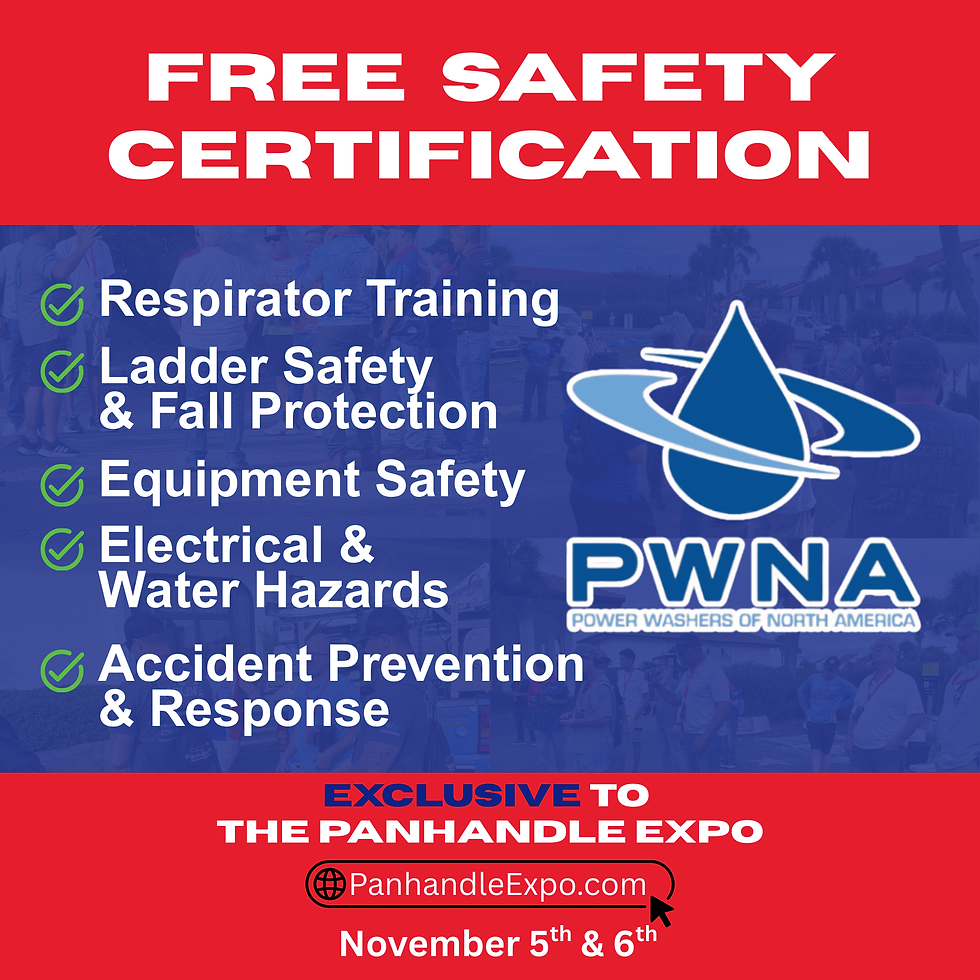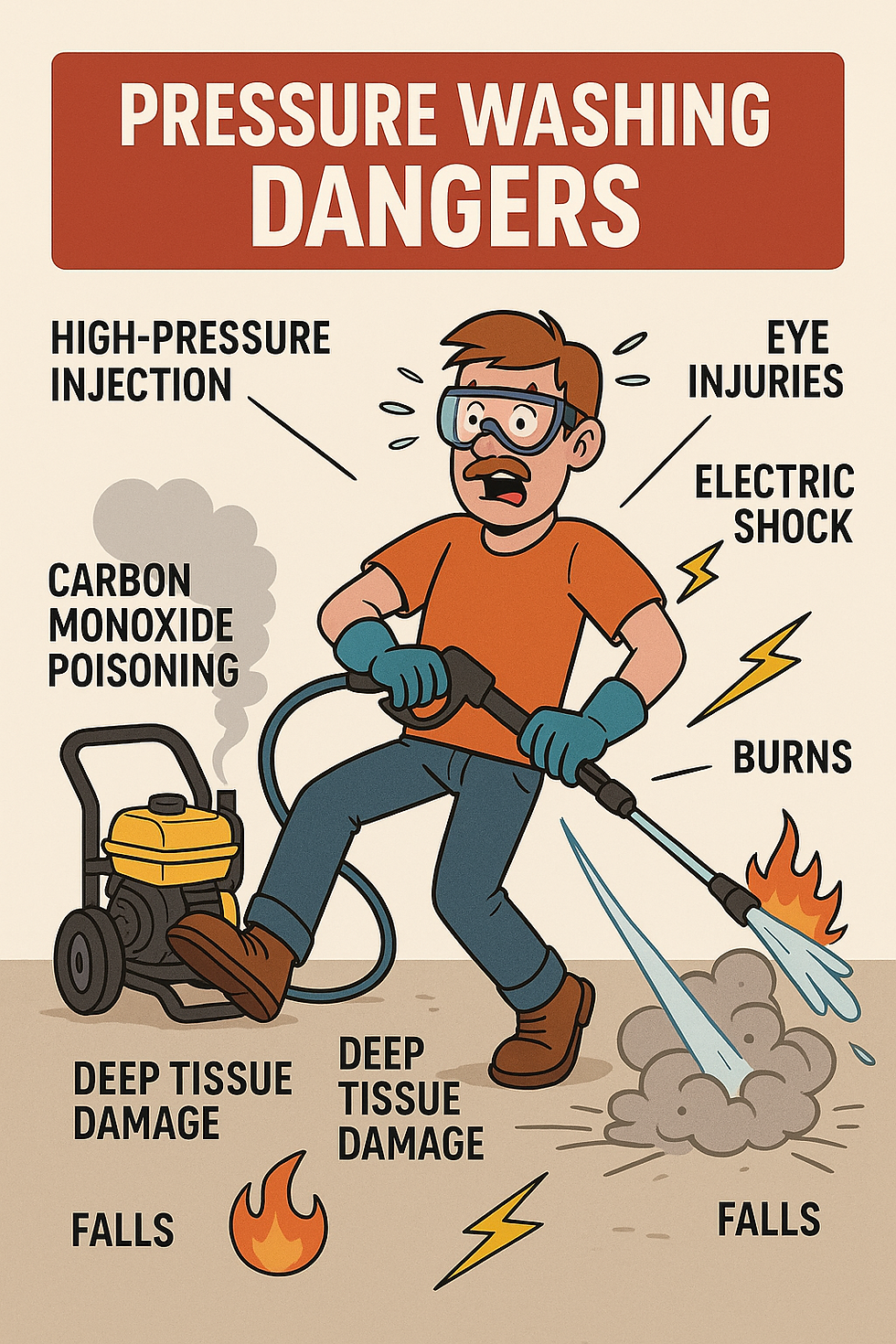Why Respiratory Protection Needs to Be Non-Negotiable in Exterior Cleaning
- Trudi Weickum

- Jul 19
- 3 min read

This one’s personal.
My father-in-law ran a body shop for years. Like a lot of guys in the trades, he worked hard, provided for his family, and never really complained. But he didn’t wear a mask. Didn’t take breaks. Didn’t think twice about the chemicals he was breathing day in and day out.
Eventually, it caught up with him.We lost him due to the long-term effects of chemical exposure.
This blog isn’t about fear.
It’s about awareness. It’s about education.
It’s about making sure that what happened to him doesn’t happen to you — or someone on your crew.
Chlorine Is More Dangerous Than You Think
Most of us use sodium hypochlorite (bleach) every day. It’s the backbone of soft washing, and when used properly, it’s safe and effective.
But here’s the key phrase: “when used properly.”
Bleach is chlorine-based — and chlorine gas is no joke. According to the Centers for Disease Control and Prevention (CDC) and NIOSH, chlorine exposure can cause both short- and long-term damage to the lungs, eyes, skin, and respiratory system.
📉 Short-Term Exposure Risks Include:
Burning eyes and throat
Persistent coughing or wheezing
Shortness of breath
Chest tightness
Headaches or dizziness(Source: CDC, 2023)
📉 Long-Term Exposure Risks Include:
Chronic bronchitis
Occupational asthma
Pulmonary edema (fluid in the lungs)
Permanent lung damage
Elevated risk of respiratory cancers
In fact, even a single high-concentration exposure can cause irreversible lung scarring, depending on the conditions and duration.
The Problem? Most Guys Don’t Mask Up
Let’s be real:
You don’t see most pressure washers wearing respirators.
We’re outside. The wind is blowing. The job has to get done.
Let’s be honest — some of the masks are uncomfortable, hot, or hard to talk through.
But the discomfort of a respirator is nothing compared to a lifetime of struggling to breathe.
What OSHA and NIOSH Recommend
When working with sodium hypochlorite or other corrosive cleaning chemicals, especially in enclosed or poorly ventilated areas, both OSHA and NIOSH recommend using:
✅ Half-face or full-face air-purifying respirators
✅ Cartridges rated for chlorine and acid gases (e.g., P100 or multi-gas cartridges)
✅ Eye protection, such as goggles or full-face respirators
✅ Chemical-resistant gloves and outerwear
And most importantly:
📋 Respirator fit testing and training should be done before using it on the job.
What You Breathe In Today Affects You Tomorrow
It doesn’t take much.
A little exposure over a long time…Or a big exposure on one bad job…Either can cause damage you don’t see until it’s too late.
And here’s the kicker:
Most lung damage isn’t noticeable until 30–50% of your lung function is already gone.(Source: American Lung Association)
That’s why we preach prevention, not reaction.
This Is Why We Teach Safety at the Panhandle Expo
This isn’t just about gear or product knowledge.
It’s about protecting the people doing the work.
At the Panhandle Pressure Washing Expo, we’re committed to helping contractors do things the right way:
✅ Safer
✅ Smarter
✅ More sustainably
We talk about respirator use, chemical handling, personal protective equipment, and the real-world risks of exposure — all from experienced pros who’ve seen what happens when these steps are ignored.
🎟️ Register for the Panhandle Pressure Washing Expo TodayWhether you’re brand new or running a team of 20, this event is your opportunity to grow, level up — and protect what matters most.
You only get one set of lungs. Take care of them.
Don’t wait until it’s too late.
By Trudi Weickum | Industry Educator | Panhandle Pressure Washing Expo








Comments